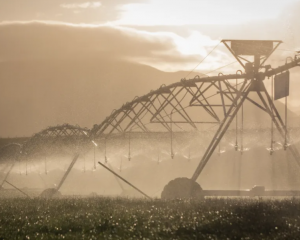Controlling sediment and nutrient runoff doesn’t need to be complicated.
Farmers in the Kaikoura Plains Recovery Project have found innovative and cost-effective ways to control sediment and nutrient runoff during drainage works at a demonstration site by using basic farm items.
Members of the project team have been working with Aqualinc Research Ltd to develop solutions to prevent more than 90% of sediment and nutrient material from entering water ways during drainage work.
Project manager Jodie Hoggard said the team wanted to find a simple, cost-effective method that used everyday items found around the farm.
Filtering sediment during drainage works reduced sediment and nutrient runoff from entering local water ways.
“Number 8 wire kind of stuff, that would align with industry agreed Good Management Practice (GMP),” she said.
The team used materials such as haybales, waratahs and cloth available from general farm retailers or roading contractors.
By lining the end of the drain with cloth covered haybales and staking the bales into ground, the team created a ‘‘sediment trap’’ which prevented more than 90% of the contaminants from entering the water way from the drain.
“Without any real industry-led examples for sediment control during works on-farm, we hatched the method together on the fly, but realised it’s actually something that could be adapted for most farm drainage work situations.
“We found there was plenty of information on sediment control in developments and road construction, but nothing really logical for on the farm,” Mrs Hoggard said.














